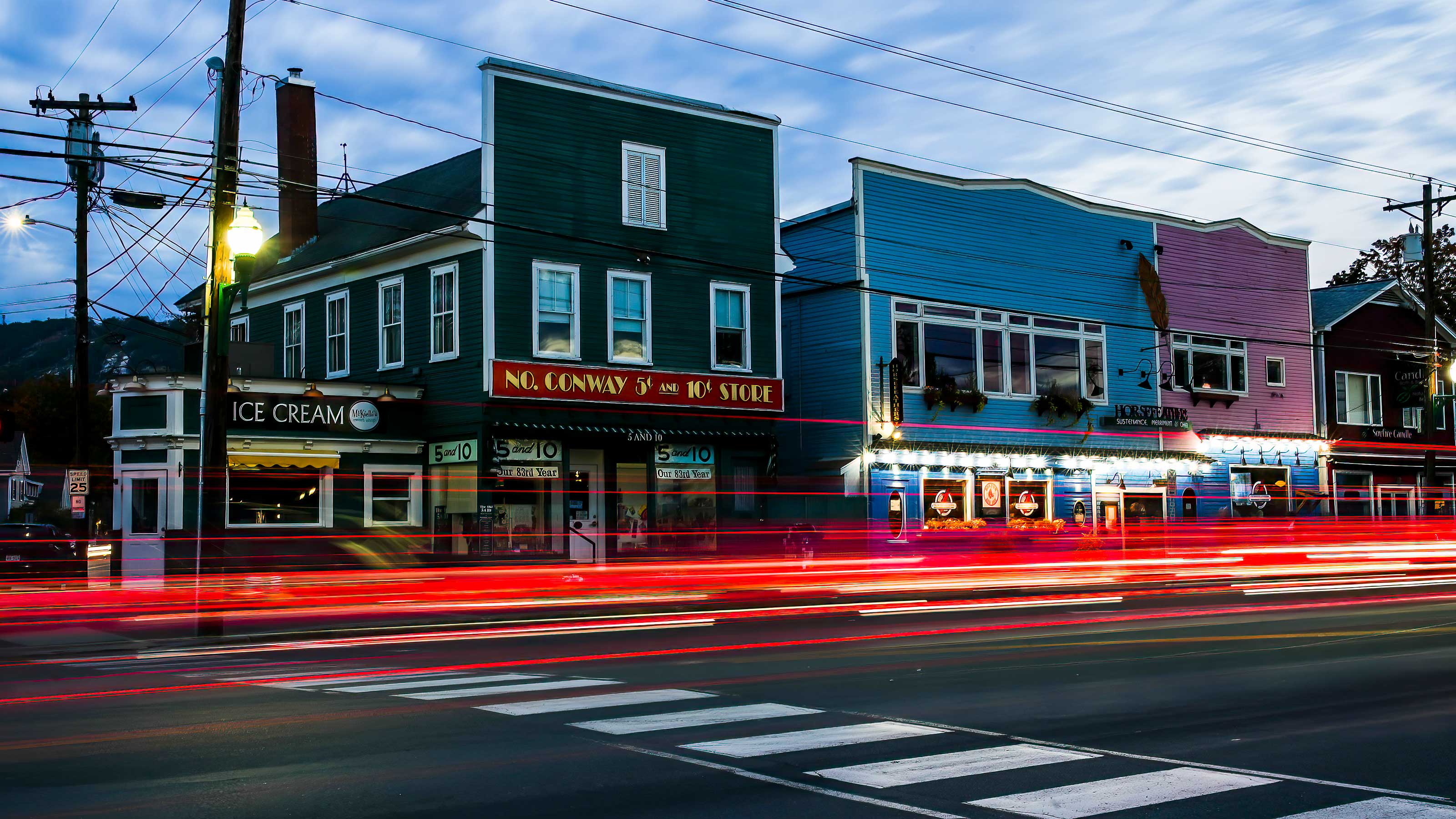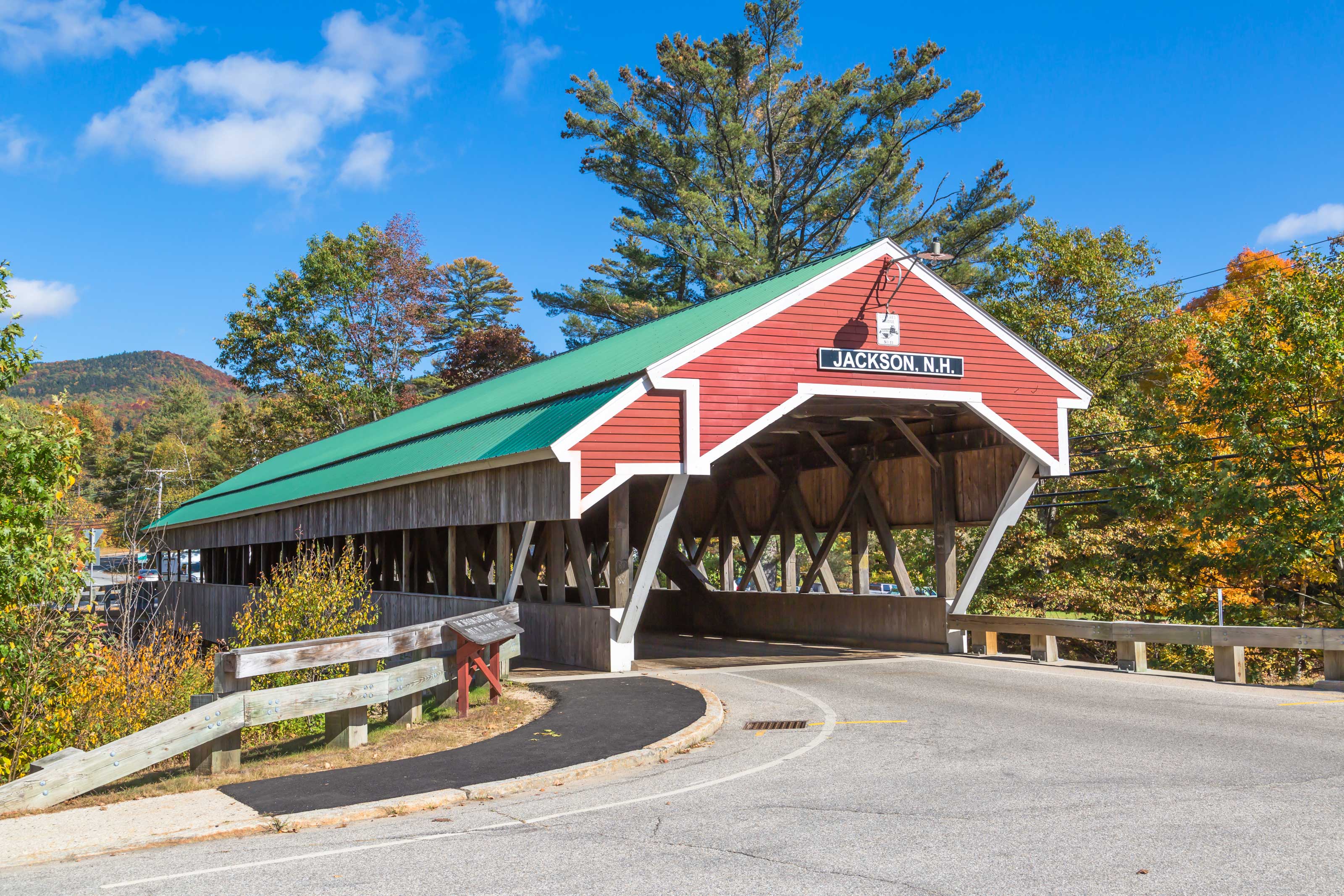

There’s a hush that settles over New Hampshire’s White Mountains in November
The tour buses are gone. The trailheads are quiet. The last of the foliage clings stubbornly to the birches before the snow claims the peaks. What’s left behind is something most travelers never see, a region between seasons, exhaling after a long and colorful year.
It’s the off-season, but to those who know New England, this is when the White Mountains feel most honest. The towns slow down, the rivers run clear, and the mountains themselves seem to rest.
If summer is for hikers and fall is for leaf-peepers, then November is for dreamers, the people who don’t mind a little chill, who prefer the sound of wind through pines to the noise of crowds, and who understand that beauty doesn’t need a calendar.
Here’s how to experience the quiet magic of New Hampshire’s most iconic region without ever leaving home.
In July, North Conway buzzes with energy - hikers spilling out of trailheads, outlet shoppers filling the sidewalks, the scenic train from Conway Scenic Railroad whistling through the valley. But in November, something changes.
The crowds thin, and what remains feels like the real town. Locals chat over coffee at Frontside Grind, the sidewalks are lined with early wreaths, and the Moat Mountain range glows with the last embers of autumn.
The famous Conway Scenic Railroad still runs limited excursions, and if you’re lucky, you can catch one of the short valley trips under a low gray sky, steam curling from the engine like breath in cold air.
Even virtually, it’s easy to fall for the place. Street views and webcams along Main Street show a quiet village framed by mountains, proof that the White Mountains’ charm doesn’t depend on crowds or color.
I have explored North Conway in all four seasons on my show, New England Traveler. Check out the episode “Mount Washington Valley Adventure” by clicking the link below, and please be sure to subscribe to our channel.
https://www.youtube.com/watch?v=iTVb4N77LBA&t=2s
Drive ten minutes north of North Conway and you reach Jackson, a postcard of New England perfection. The red-covered bridge at the village entrance still bears the words “Honeymoon Bridge” in white paint, welcoming couples as it has for more than a century.
In November, Jackson’s rhythm changes from brisk to unhurried. Inns prepare for ski season, fireplaces crackle early, and the scent of woodsmoke drifts down the valley. The Wentworth Inn and Christmas Farm Inn glow with lamplight, offering that quintessential “off-season in the mountains” mood, a mix of solitude and anticipation.
Jackson’s Main Street feels made for wandering. You can imagine walking past Flossie’s General Store, watching frost cling to windowpanes, and hearing the distant rush of the Ellis River.
It’s peaceful in a way few places are anymore, the kind of peace that doesn’t need an agenda or itinerary.
Further north, the mountains grow steeper and the stories deeper. Franconia Notch State Park, known for the now-vanished Old Man of the Mountain, takes on a haunting beauty in November.
With the foliage gone, the cliffs stand raw and exposed. The wind hums through the Notch like a distant organ note. Echo Lake, often glassy and reflective, turns to quicksilver under the cold light.
Hikers who visit this time of year often have the trails to themselves. Artist’s Bluff, a short climb with sweeping views of the valley, feels like standing in a painting stripped to its outlines, just rock, sky, and memory.
For remote exploration, park webcams and drone footage available online capture that desolate splendor perfectly. It’s a place that proves nature doesn’t need color to make you feel something.
While most travelers head for Lincoln or Conway, those who prefer the quieter corners of the Whites end up in Sugar Hill: population 600, give or take.
Come June, it’s famous for its purple lupine fields, but by November, Sugar Hill slips into hibernation. The fields are empty, the sky vast, and the air sharper than a pine needle. Yet the town’s spirit doesn’t fade.
At the Sugar Hill Sampler, a country store inside a converted 1830s barn, you’ll find shelves of maple products and old-fashioned gifts, often tended by the same families who’ve run the shop for decades.
This is where the “real” New Hampshire lives, not in the ski resorts or tourist traps, but in the rhythm of local life. A pot of coffee on the stove, a woodpile stacked high, a view of Mount Lafayette through a kitchen window.
It’s that kind of small-scale beauty that keeps people coming back or, in your case, clicking back.
If you want to feel the geology of New Hampshire, not just see it, look to Lincoln, where the Lost River Gorge & Boulder Caves carve their way under the surface of Kinsman Notch.
While the attraction itself closes for winter, virtual tours and photos capture the surreal beauty of moss-covered granite and rushing black water disappearing into the earth.
Above ground, Lincoln feels almost cinematic in November: empty chairlifts, silent ski condos, and the white mountains rising like sleeping giants behind the town.
The Kancamagus Highway begins here, a 34-mile stretch that may be the most famous scenic drive in New England. In November, it’s stripped of its autumn blaze but still achingly beautiful, all silvery birch trunks, frozen streams, and mist in the valleys.
It’s the season’s intermission - no fanfare, just the mountains catching their breath.
Few towns in New England have reinvented themselves quite like Bethlehem. Once a Gilded Age summer retreat for wealthy city dwellers, it’s now a year-round creative hub that feels both vintage and modern.
In November, Bethlehem’s Main Street glows softly under early-evening lamplight. The historic Colonial Theatre, one of the oldest continuously operating movie houses in the country, still hosts indie films and local events. Across the street, galleries and cafés like WREN (Women’s Rural Entrepreneurial Network) display locally made crafts and photography.
Bethlehem’s altitude (over 1,400 feet) gives it crisp, clean air even before the snow flies. When the wind drops at dusk, you can almost hear the echo of distant sleigh bells, a nod to the town’s grand-hotel past.
It’s proof that “off-season” doesn’t mean lifeless. Sometimes, it just means you finally get to see the place for what it really is.
Most people visit New Hampshire’s mountains for spectacle: color, snow, adrenaline. But the in-between months tell a different story. They reveal the human side of the landscape, the small towns that run on routine, the inns that stay open out of love, the locals who wave from pickup trucks because that’s what you do here.
The White Mountains in November remind us that silence has value. The pause between fall and winter isn’t empty, it’s restorative.
For writers, photographers, or just wanderers with a mug of coffee and a laptop, this is the season that feeds the imagination. The colors fade, but the mood deepens. The world narrows to essentials: light, texture, memory.
Mount Washington Observatory Webcams: Live feeds of summit conditions, sunsets, and mountain weather unlike anywhere else.
Conway Scenic Railroad Virtual Rides: Short YouTube clips and drone videos that capture the golden light of November in the valley.
White Mountains Attractions Website: Offers off-season photos, travel maps, and virtual panoramas of Franconia Notch and Crawford Notch.
Instagram Hashtags: Try searching #WhiteMountainsNH or #JacksonNH to find local photographers posting real-time images.
Pair that with a mug of hot cider and some gentle instrumental music, and you’ve got yourself a New England evening — no flight required.
When the first snow finally dusts the peaks, it won’t come as a surprise, the mountains have been preparing for it all along.
In that waiting, that stillness, lies a kind of grace.
New Hampshire’s White Mountains don’t just attract tourists; they create perspective. They remind us that rest is not idleness, and quiet is not emptiness. It’s the world catching its breath and inviting us to do the same.
Whether you’re exploring online or planning your next trip north, take a moment this November to appreciate the spaces between seasons.
Because sometimes, the most beautiful time to see the mountains is when they’re asleep.




